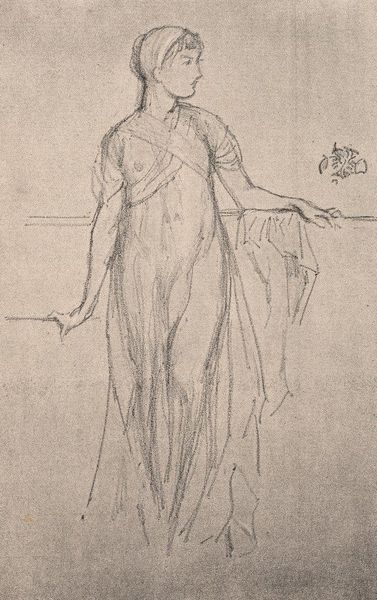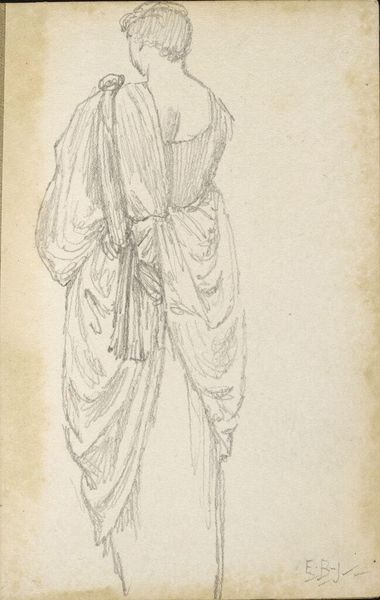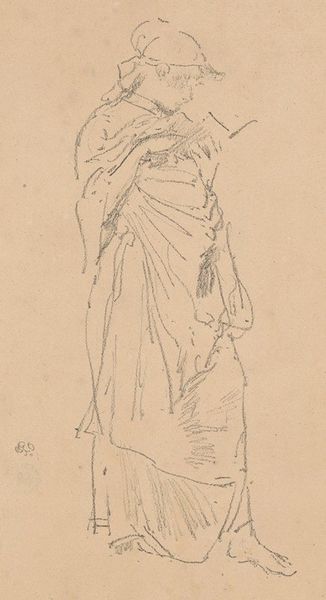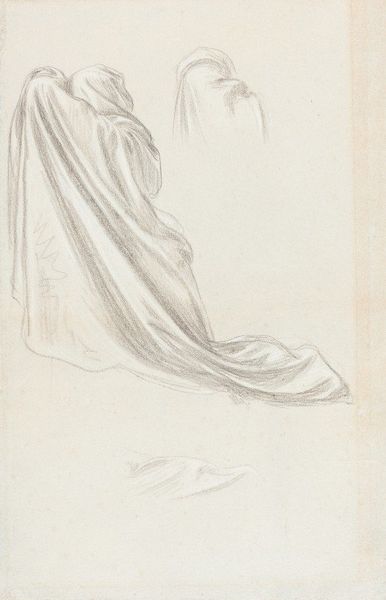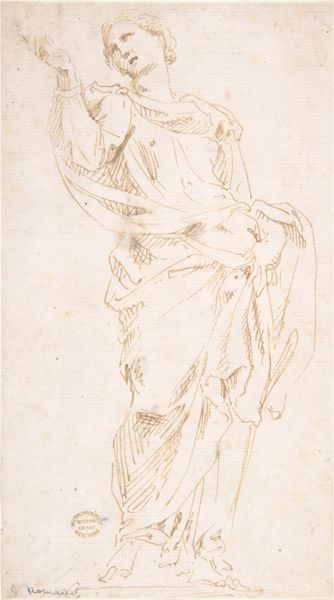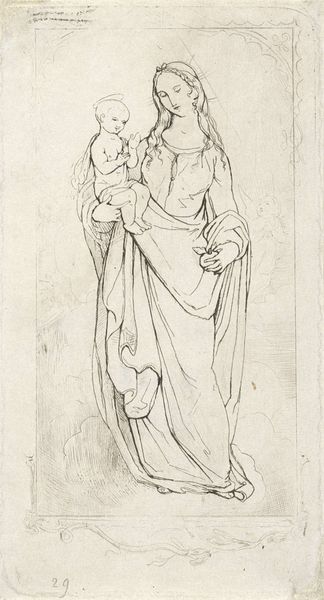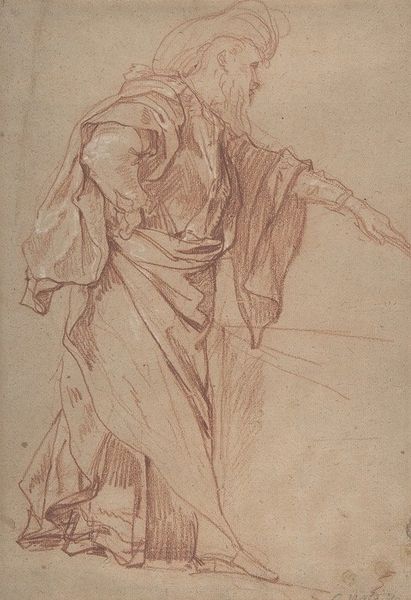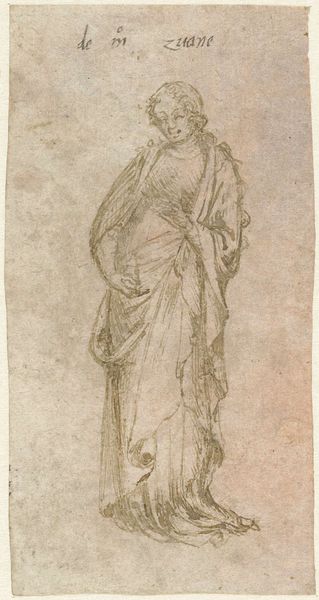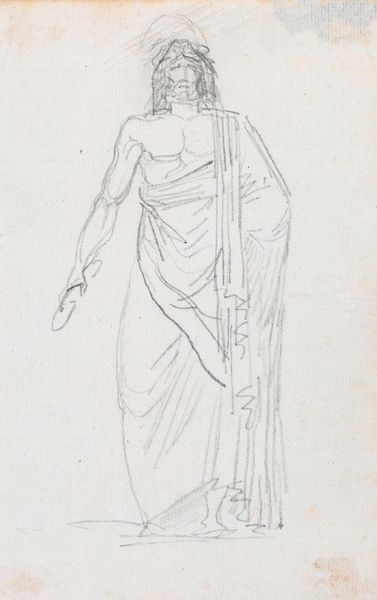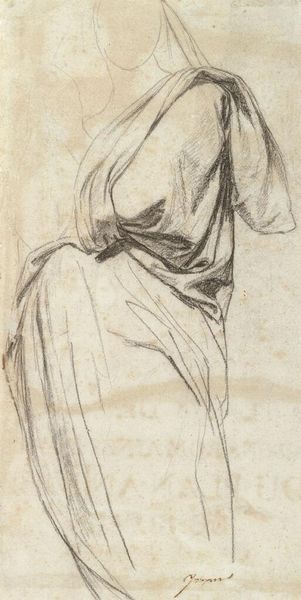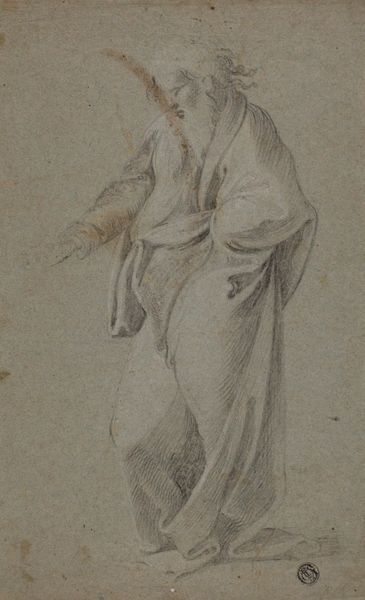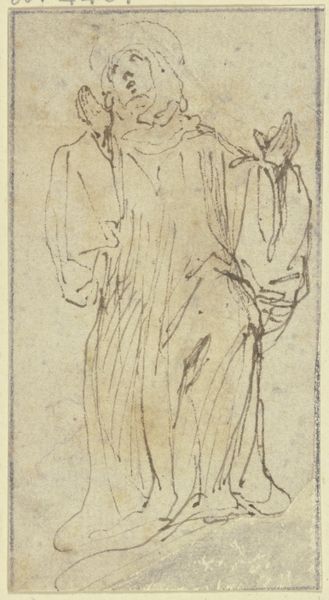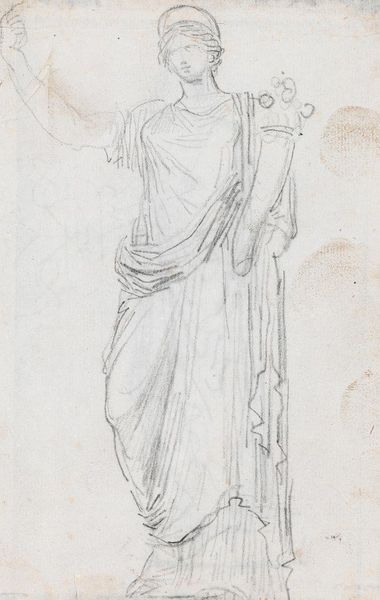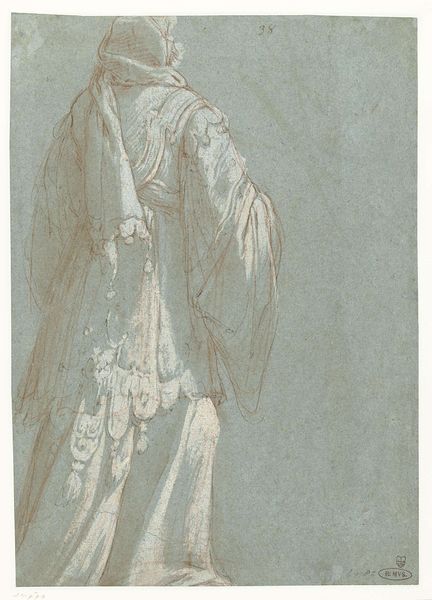
drawing, pencil
#
portrait
#
drawing
#
classical-realism
#
figuration
#
pencil
#
history-painting
#
academic-art
Copyright: Public Domain: Artvee
Curator: The diaphanous drapery lends a monumental feel to this delicate drawing. It is "Woman in Toga," by Hubert Robert, circa 1754 to 1765. The work is pencil on paper. Editor: My first impression is that it evokes a sense of classical yearning. There is something ghostly and ephemeral about it. Curator: The imagery carries the visual memory of the figures from antiquity that Robert often studied during his time in Italy. Her simple garb, the toga, acts as an echo of Republican virtues. Editor: It is hard for me to ignore the potential power dynamics at play in the work, given the garment evokes images of Roman power, itself steeped in gendered politics of visibility and exclusion. It appears to be incomplete. Is this a study for a more developed piece, and how does that incompleteness relate to its political charge? Curator: This sketch could very well be a fragment of a larger narrative Robert was constructing in his mind's eye. The facelessness invites projection, doesn't it? A universal figure rather than a specific individual is conveyed here, carrying broader themes. Editor: Perhaps the lack of distinct features allows for a certain level of interpretation but that absence also runs the risk of erasing individual experience and agency. The woman stands, draped, idealized. It is like she's stripped of the complexity of selfhood in service of a grander narrative about history. What does she stand for and who is doing the standing here? Curator: Your reading opens questions about the relationship between representation and agency. I had interpreted the facelessness as more emblematic, but your point about whose gaze is prioritized gives me pause. Editor: Exactly! What do you walk away with after considering this work further? Curator: The layered meaning inherent in the visual symbols and their capacity to resonate with different perspectives across time really resonates with me now. Editor: I am left questioning whose stories are told, whose voices amplified, and whose are erased in these historical reconstructions, and I see those questions in this work more fully now.
Comments
No comments
Be the first to comment and join the conversation on the ultimate creative platform.
